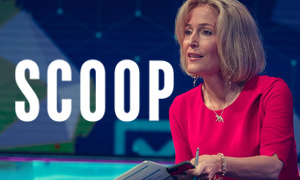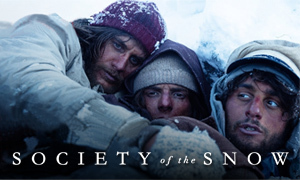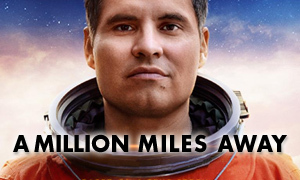Hidden Figures: History vs. Hollywood
| REEL FACE: | REAL FACE: |
Taraji P. Henson
Born: September 11, 1970 Birthplace: Washington, District of Columbia, USA | Katherine Johnson
Born: August 26, 1918 Birthplace: White Sulphur Springs, West Virginia, USA |
Octavia Spencer
Born: May 25, 1970 Birthplace: Montgomery, Alabama, USA | Dorothy Vaughan
Born: September 20, 1910 Birthplace: Kansas City, Missouri, USA Death: November 10, 2008, Hampton, Virginia, USA |
Janelle Monáe
Born: December 1, 1985 Birthplace: Kansas City, Kansas, USA | Mary Jackson
Born: April 9, 1921 Birthplace: Hampton, Virginia, USA Death: February 11, 2005, Hampton, Virginia, USA |
Mahershala Ali
Born: February 16, 1974 Birthplace: Oakland, California, USA | Lieutenant Colonel Jim Johnson
Birthplace: USA |
Glen Powell
Born: October 21, 1988 Birthplace: Austin, Texas, USA | John Glenn
Born: July 18, 1921 Birthplace: Cambridge, Ohio, USA Death: December 8, 2016, Columbus, Ohio, USA |
Is Kevin Costner's character based on a real person?
Not exactly. In researching the Hidden Figures true story, we learned that Kevin Costner's character, Al Harrison, is based on three different directors at NASA Langley during Katherine Johnson's time at the research facility. The movie's director, Theodore Melfi, was unable to secure the rights to the guy he wanted, so he decided to make Costner's Al Harrison a composite character. -Today Show
What are some of Katherine Johnson's accomplishments at NASA?
Over the course of her three decades at NASA, Katherine Johnson's biography includes an impressive list of accomplishments. She calculated trajectories for Alan Shepard's groundbreaking 1961 spaceflight (America's first human in space), she verified the calculations for John Glenn's first American orbit of Earth, she computed the trajectory of Apollo 11's flight to the moon, and she worked on the plan that saved Apollo 13's crew and brought them safely back to Earth. For her accomplishments, President Barack Obama awarded her the Presidential Medal of Freedom on November 24, 2015. -NASA Katherine Johnson Documentary
Did Katherine's father really move the family 120 miles each school year so that she and her siblings could continue their education?
Yes. Born in 1918, Katherine G. Johnson's impressive intellect was evident from the time she was a child. She was fascinated with numbers and became a high school freshman by age 10. In her hometown of White Sulphur Springs, West Virginia, school for African-Americans normally stopped at the eighth grade for those who could afford to attend. Katherine's father, Joshua, was determined to see his children reach their potential, so he drove the family 120 miles to Institute, West Virginia, where blacks could pursue an education past the eighth grade, through high school, and into college. He rented a house for the family to stay during the school year and journeyed back and forth to White Sulphur Springs for his job at a hotel. He did this for eight years, so that each of his four children could go to high school and college. Katherine proved to be so smart that she skipped several grades, graduating high school at age 14 and from West Virginia State College at 18. -NASA
Did black women have to abide by segregation laws when they first started working at Langley in the 1940s?
Yes. "At the time the black women came to work at Langley [in 1943], this was a time of segregation," says Hidden Figures author Margot Lee Shetterly. "Even though they were just starting these brand new, very interesting jobs as professional mathematicians, they nonetheless had to abide by the state law, which was that there were segregated work rooms for them, there were segregated bathrooms, and there were segregated cafeterias. On their table in the cafeteria was a sign that said 'colored computers,' which sort of sounds like an iMac or something, right, today? But this referred to the black women who were doing this mathematical work." They were essentially human computers. -Al Jazeera
Did Katherine Johnson feel the segregation of the outside world while working at NASA?
No. "I didn't feel the segregation at NASA, because everybody there was doing research," says the real Katherine G. Johnson. "You had a mission and you worked on it, and it was important to you to do your job...and play bridge at lunch. I didn't feel any segregation. I knew it was there, but I didn't feel it." Even though much of the racism coming from Katherine's coworkers in the movie seems to be largely made up (in real life she claimed to be treated as a peer), the movie's depiction of state laws regarding the use of separate bathrooms, buses, etc. was very real. African-American computers had also been put in the segregated west section of the Langley campus and were dubbed the "West Computers." -WHROTV Interview
In Margot Lee Shetterly's book, Hidden Figures, she writes about a cardboard sign on one of the tables in the back of NASA Langley's cafeteria during the early 1940s that read, "COLORED COMPUTERS." This particularly struck a nerve with the women because it seemed especially ridiculous and demeaning in a place where research and intellectual ability was focused on much more than skin color. It was Miriam Mann, a member of the West Computers, who finally decided to remove the sign, and when an unknown hand would make a new sign a few days later, Miriam would shove that sign into her purse too. Eventually, the signs stopped reappearing at some point during the war.
Did they really think Katherine G. Johnson was the janitor there to empty the garbage can?
Was Katherine Johnson hired directly into NASA's space program?
No. The Hidden Figures true story confirms that she was hired in 1953 at NASA's Langley Research Center in Hampton, Virginia to work as part of a female team nicknamed "Computers Who Wear Skirts." She then began to assist the all-male flight research team, who eventually welcomed her on board. Like in the movie, she worked with airplanes in the Guidance and Navigation Department. In those days, NASA still went by the initials NACA, the National Advisory Committee for Aeronautics, which in 1958 became the National Aeronautics and Space Administration (NASA) thanks to the Space Act of 1958. -WHROTV
Is Jim Parsons' character, NASA engineer Paul Stafford, based on a real person?
No. In fact-checking the Hidden Figures movie, we learned that white collar statistician Paul Stafford, portrayed by Jim Parsons, is a fictional character. He was created to represent certain racist and sexist attitudes that existed during the 1950s. In the film, he thwarts every effort Katherine (Taraji P. Henson) makes to get ahead, including reducing her job qualifications to secretarial duty, omitting her byline on official reports, and telling her it's not appropriate for women to attend space program briefings. By the end of the movie, Stafford's fictional storyline includes the character having a change of heart, which is emphasized when he brings Katherine a cup of coffee.
Is Kirsten Dunst's character, Vivian Mitchell, based on a real person?
No. Hard-nosed supervisor Vivian Mitchell (Kirsten Dunst) is a fictional character created to represent some of the unconscious bias and prejudice of the era. She is at best a composite of some of the supervisors who worked at NASA Langley.
Were the women really known as "computers"?
Yes. Before the days of electronic computers that we're familiar with today, the women hired at NASA to calculate trajectories, the results of wind tunnel tests, etc. had the job title of "computer." In simple terms, these were mathematicians who performed computations. Even when electronic computers were first used at NASA, human computers like Katherine Johnson still often performed the calculations by hand to verify the results of their electronic counterparts. -NASA
When did women begin working as NASA "computers"?
NACA (the precursor to NASA) hired five women in 1935 to be part of their first computer pool at the Langley Research Center. NACA began recruiting African-American women shortly after the attack on Pearl Harbor on December 7, 1941, which thrust the U.S. into the war and increased the demand for workers in the defense industry. President Franklin Roosevelt issued Executive Order 8802, which prohibited "discrimination in the employment of workers in defense industries or government because of race, creed, color, or national origin." -PopularMechanics.com
Was Dorothy Vaughan NACA's first black supervisor?
Yes. As we explored the Hidden Figures true story, we discovered that Dorothy Vaughan became NACA's first black supervisor in 1948, five years before Katherine Johnson started working there. Vaughan was also an advocate and voice for the women in the "West Computers" pool. The movie shows her leading the women down the hall to their next assignment, an obvious nod to the team of astronauts walking down the hall in the 1983 movie The Right Stuff. -PopularMechanics.com
Was Katherine really told that women aren't usually included in the space program briefings?
Yes. "I asked permission to go," says Katherine, "and they said, 'Well, the girls don't usually go,' and I said, 'Well, is there a law?' They said, 'No.' Then my boss said, 'Let her go.' And I began attending the briefings." In the Hidden Figures movie (watch the trailer), Jim Parsons' character, Paul Stafford, tells Katherine (Taraji P. Henson) that women don't go to the briefings. "There's no protocol for women attending," Stafford states. After she continues to question this unspoken rule, their boss, Al Harrison (Kevin Costner), decides to let her attend the briefing.
Did Katherine have to run across the NASA Langley campus to use the bathroom?
Not exactly. In Margot Lee Shetterly's book, this is something that is experienced more by Mary Jackson (portrayed by Janelle Monáe) than Katherine Johnson. Mary went to work on a project on NASA Langley's East Side alongside several white computers. She was not familiar with those buildings and when she asked a group of white women where the bathroom was, they giggled at her and offered no help. The closest bathroom was for whites. Humiliated and angry, Mary set off on a time-consuming search for a colored bathroom. Unlike in the movie, there were colored bathrooms on the East Side but not in every building. The sprint across the campus in the movie might be somewhat of an exaggeration, but finding a bathroom was indeed a point of frustration.
As for Katherine Johnson herself, Shetterly writes that when Katherine started working there, she didn't even realize that the bathrooms at Langley were segregated. This is because the bathrooms for white employees were unmarked and there weren't many colored bathrooms to be seen. It took a couple years before she was confronted with her mistake, but she simply ignored the comment and continued to use the white restrooms. No one brought it up again and she refused to enter the colored bathrooms.
Was Mary Jackson really NASA's first African-American female engineer?
Yes. Mary Jackson, portrayed by Janelle Monáe in the movie, was hired to work at Langley in 1951. Like in the movie, she accepted an assignment assisting senior aeronautical research engineer Kazimierz Czarnecki (renamed Karl Zielinski in the movie), who encouraged her to pursue a degree in engineering, which required her to take after-work graduate courses. She petitioned the city of Hampton to be able to attend graduate classes alongside her white peers. She won, got her degree, and was promoted to engineer in 1958. -PopularMechanics.com
How did Katherine Johnson's first husband die?
Katherine Johnson's first husband, James Francis Goble, died in December 1956 from an inoperable tumor located at the base of his skull. His health had been slowly declining for a year and he had spent much of that time in the hospital. He had to quit his job as a painter at the Newport News shipyard (he had previously been a chemistry teacher but gave up the job in 1953 when the family moved so that Katherine could take the position at NASA). Before his death, Katherine had promised her husband that she would keep their three adolescent daughters on a path to college. She now had to play the role of both mother and sole breadwinner. Katherine established new rules around the house and assigned chores to the children, including having their mother's clothes ironed and ready in the morning and having dinner ready when she got home. -Hidden Figures book
Did the women mathematicians at NASA get to meet astronauts like John Glenn?
Yes. "We did get to meet the astronauts," says the real Katherine Johnson. "They weren't as excited as we were, and we just looked at them in awe." -WHROTV
Did Katherine Johnson really compute John Glenn's trajectory?
Yes. "When John Glenn was to be the first astronaut to go up into the atmosphere and come back, and they wanted him to come back in a special place, and that was what I did, I computed his trajectory," says Katherine Johnson. "From then on, any time they were going to compute trajectories, they were given mostly, all of them to my branch, and I did most of the work on those by hand." -WHROTV Katherine Johnson Interview
Did John Glenn really ask that Katherine double-check the electronic computer's calculations for his first Earth orbit?
Yes. Fact-checking the Hidden Figures movie confirmed that John Glenn personally requested that Katherine recheck the electronic computer's calculations for his February 1962 flight aboard the Mercury-Atlas 6 capsule Friendship 7—the NASA mission that concluded with him becoming the first American to orbit the Earth. The scene in the movie unfolded in almost exactly the same way it does in real life, with Glenn's request for Katherine taken nearly verbatim from the transcripts. He even refers to her as "the girl." "Get the girl to check the numbers... If she says the numbers are good... I'm ready to go." -NASA
When did Katherine Johnson retire from NASA?
In researching Katherine Johnson's biography, we learned that she was hired in 1953 and retired from NASA in 1986, for a career that spanned approximately 33 years. Prior to NASA, she had worked as a school teacher and a stay-at-home mom. -NASA
What is probably the biggest difference between the Hidden Figures movie and the true story?
"You might get the indication in the movie that these were the only people doing those jobs, when in reality we know they worked in teams, and those teams had other teams," author Margot Shetterly explained. "There were sections, branches, divisions, and they all went up to a director. There were so many people required to make this happen. ... But I understand you can't make a movie with 300 characters. It is simply not possible." -Space.com
What did the real Katherine Johnson think of the movie?
"Katherine Johnson saw the movie and she really liked it," said author Margot Shetterly (Space.com). Katherine told the Daily Press, "It sounded good...It sounded very, very accurate."
Katherine Johnson Interview & Hidden Figures Videos
Broaden your knowledge of the Hidden Figures true story by viewing the Katherine G. Johnson interview and documentary below. Then watch an interview with Tracy Drain, a current NASA scientist who discusses her journey to NASA and the real-life women who inspired the movie.
Link-to-Learn More:







